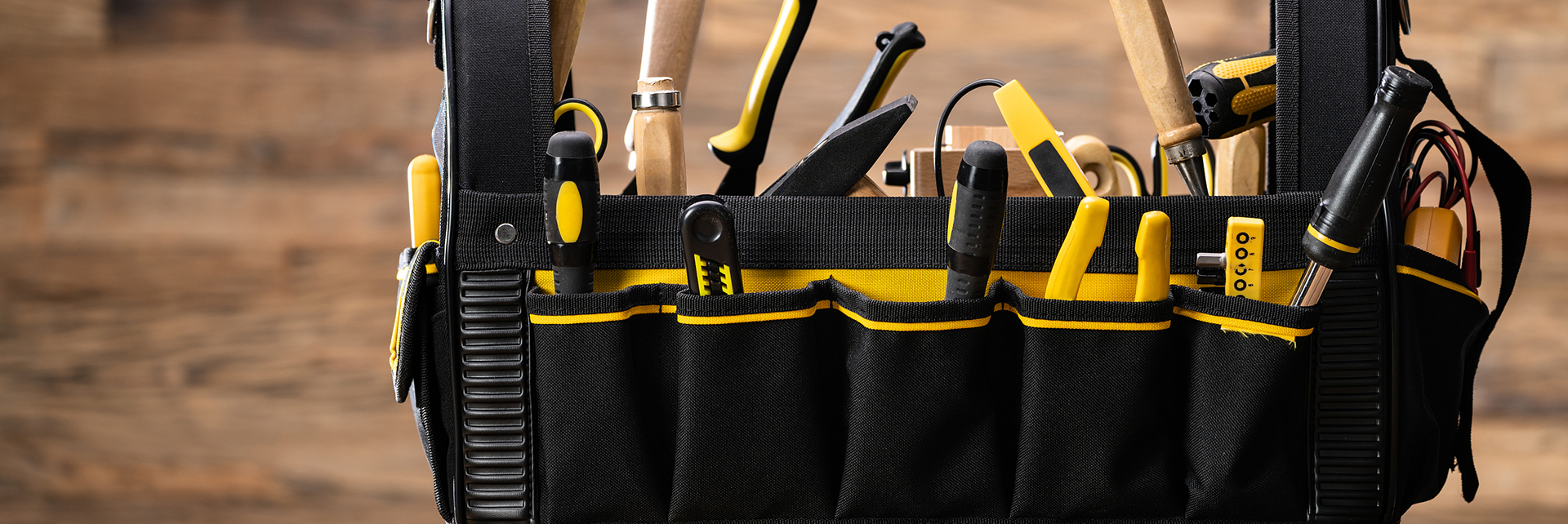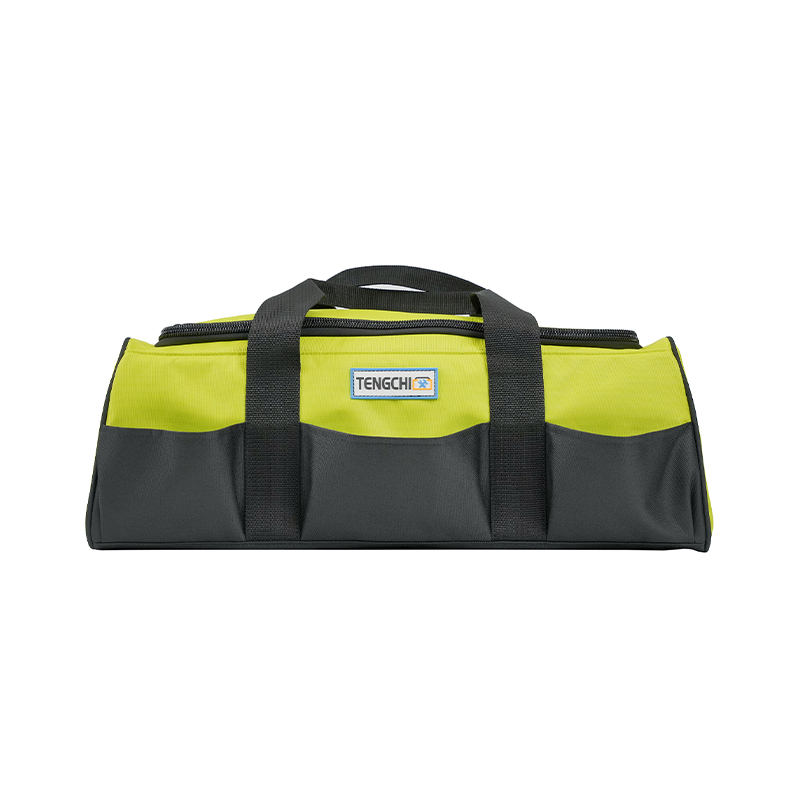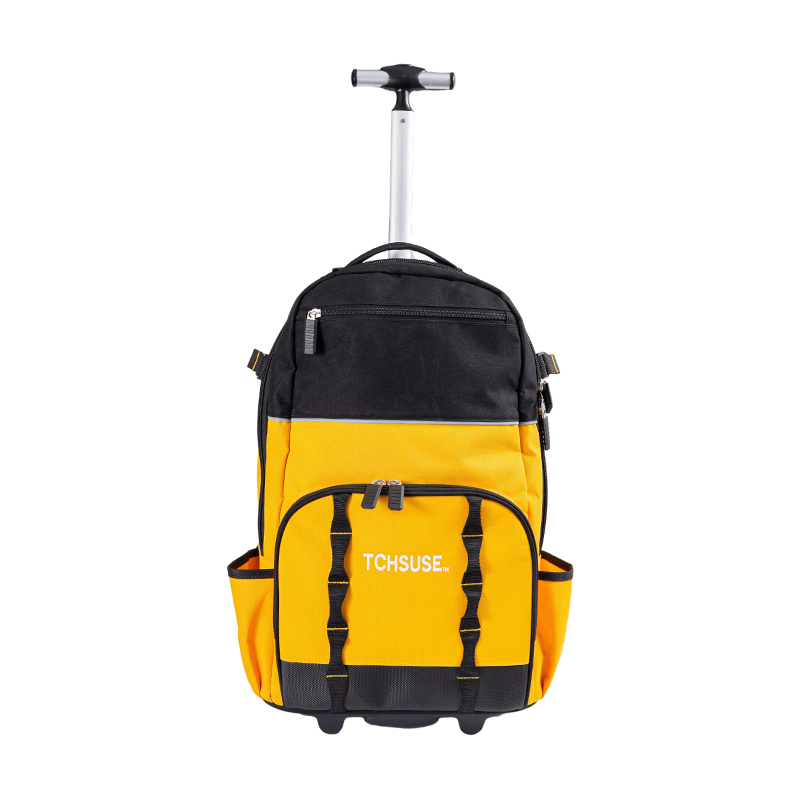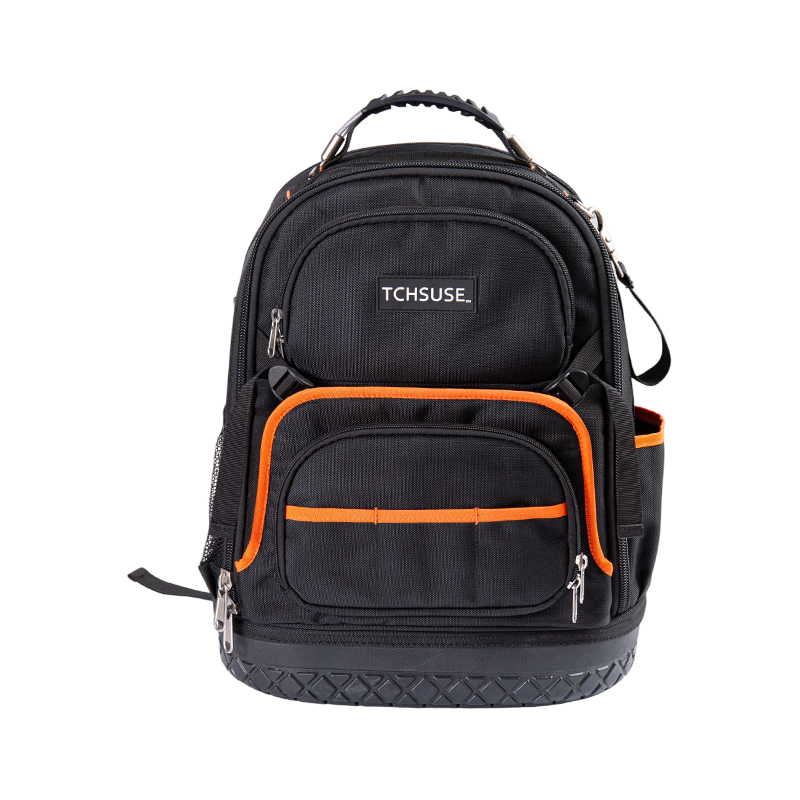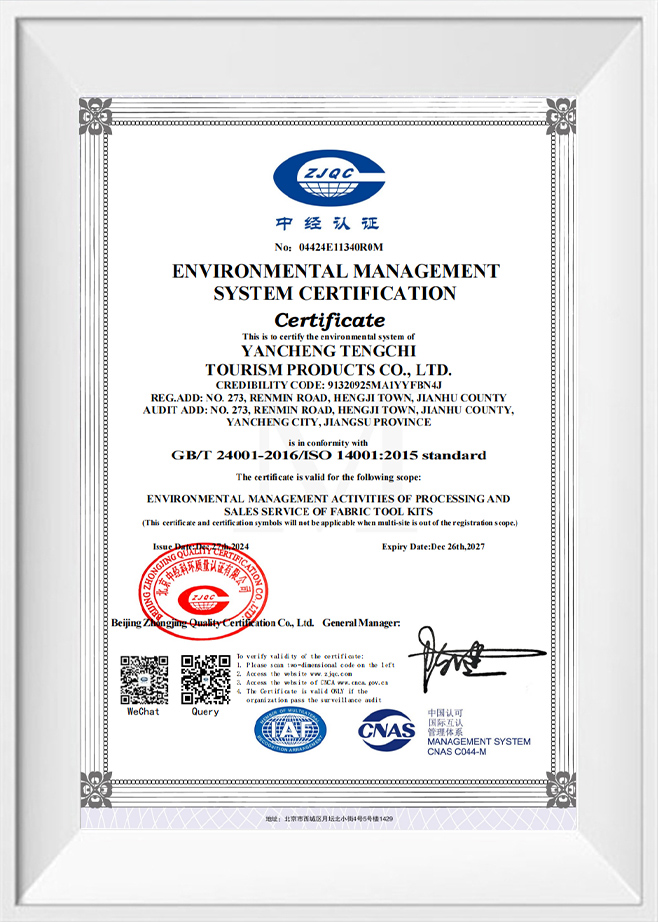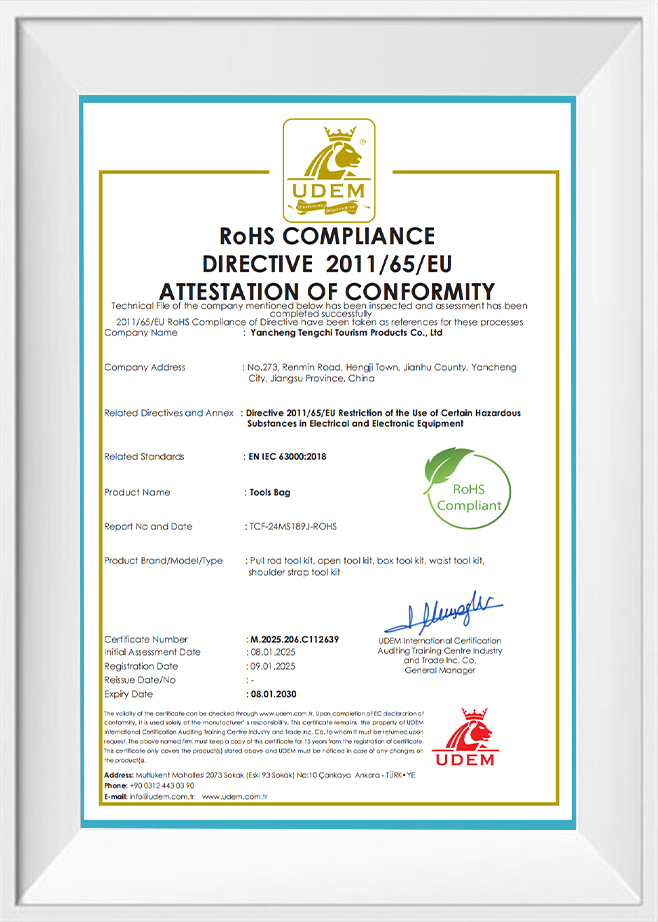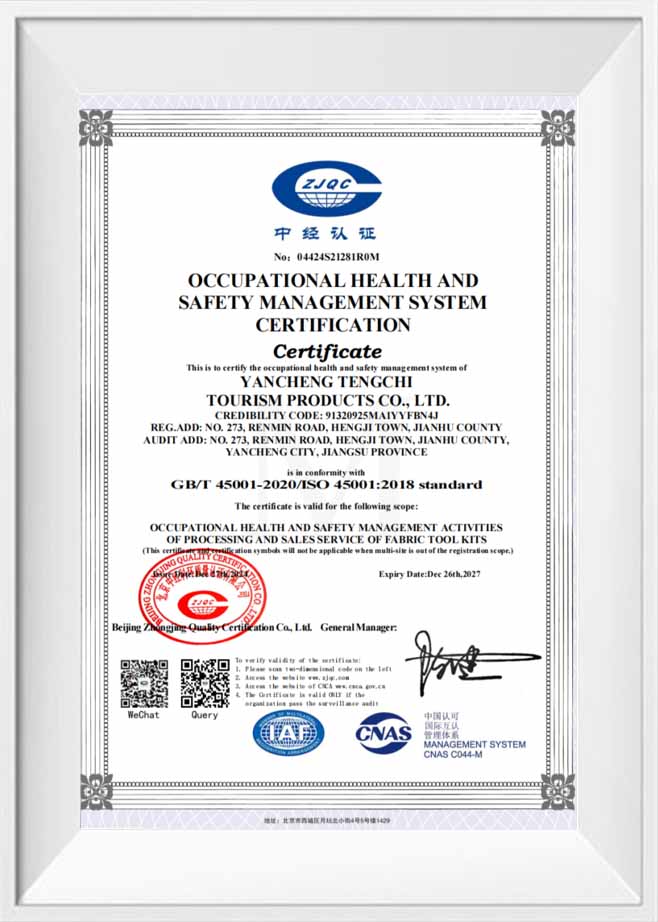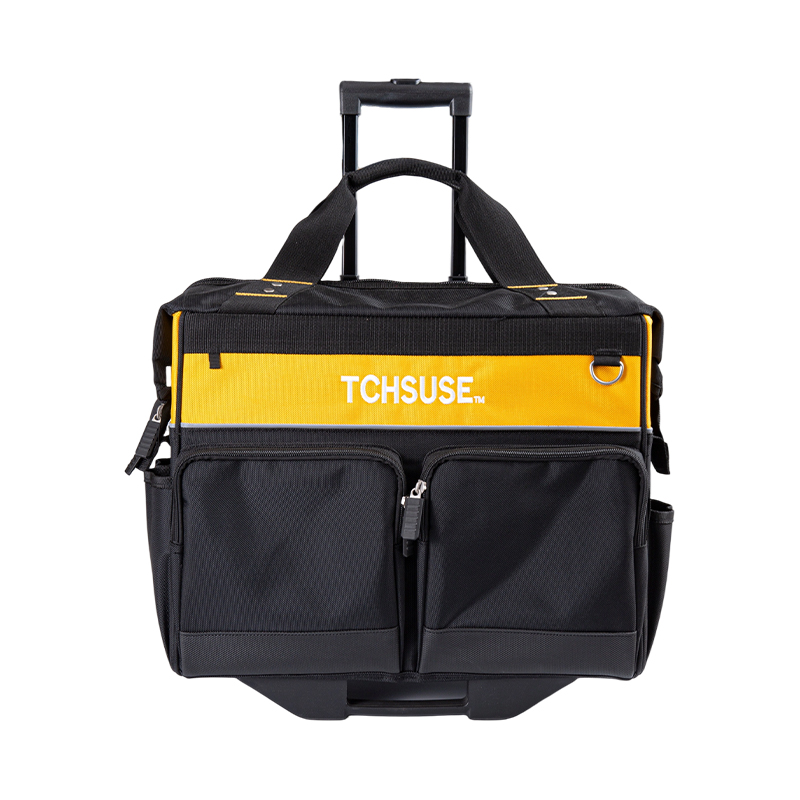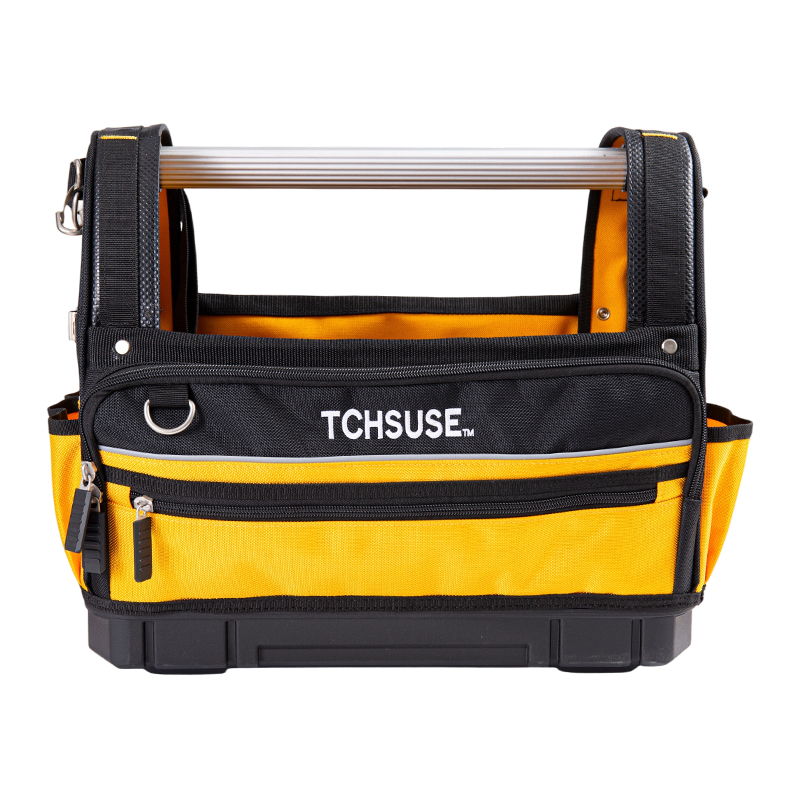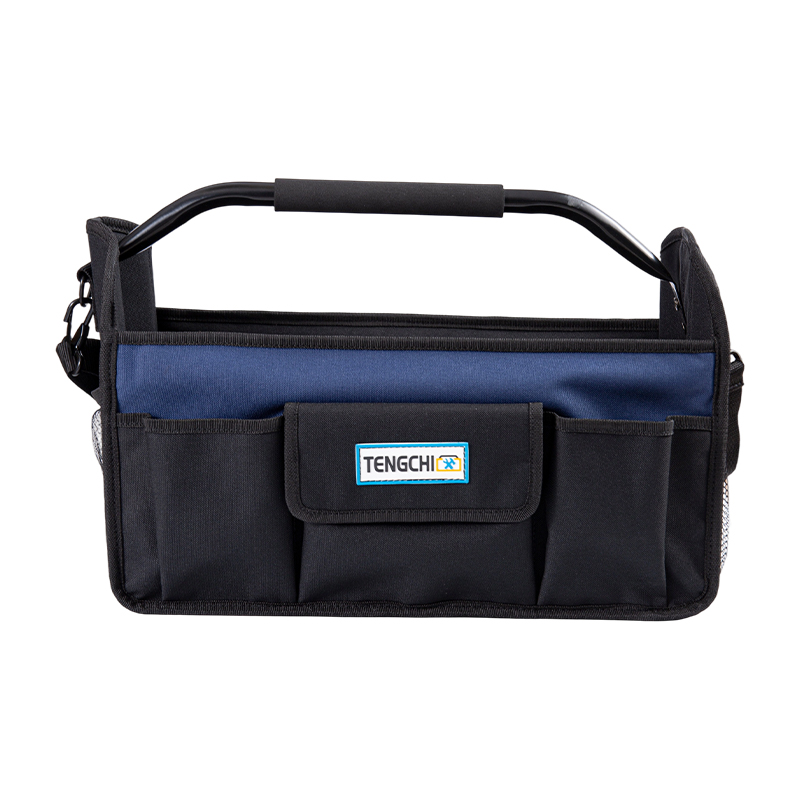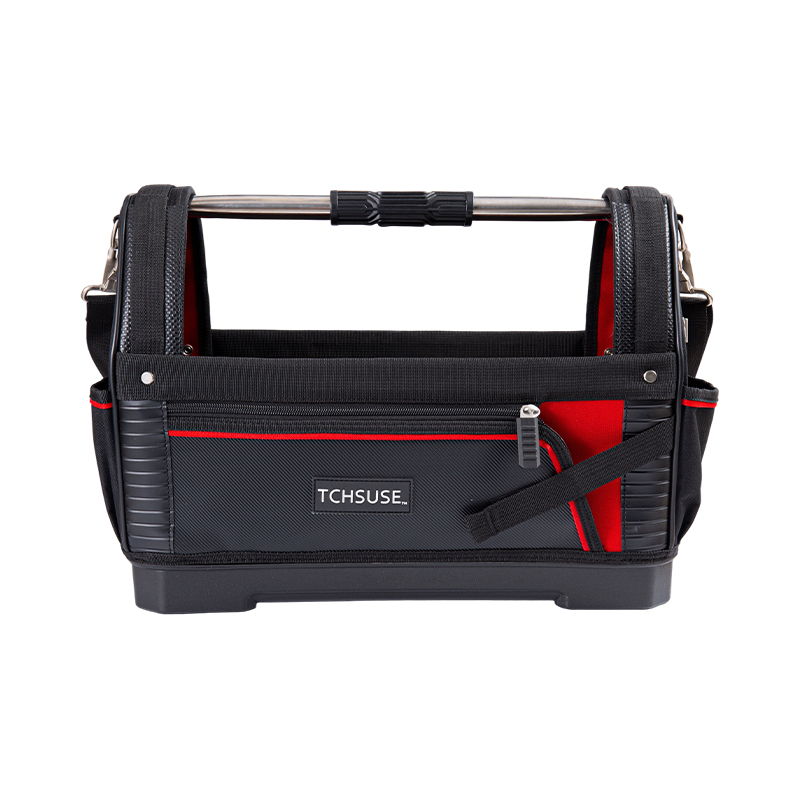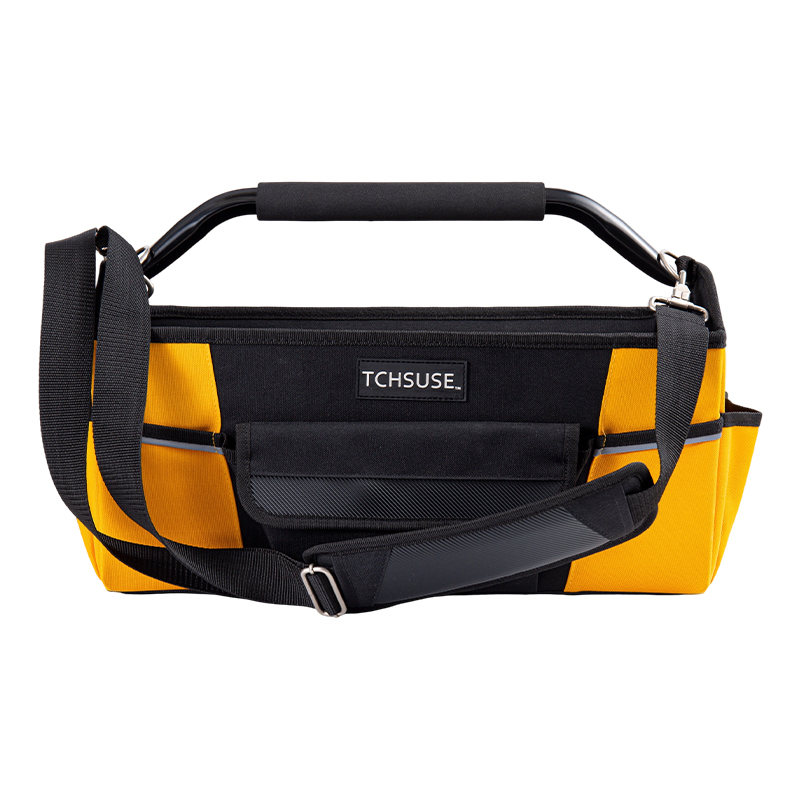What Material Are Plastic Base Tool Bags Made Of, and Are They Prone to Cracking?
Material Selection for Plastic Base Tool Bags
Plastic base tool bags are designed to provide structure, load support, and improved durability for professionals who frequently work in construction, electrical maintenance, automotive repair, or industrial environments. The base material plays an important role in determining stability and long-term performance. Manufacturers such as Tengchi, located in Yancheng, Jiangsu Province, develop tool bags with an emphasis on controlled quality, supported by a production facility covering 25,000 square meters and a workforce experienced in heavy-duty applications. When designing plastic base tool bags, the company evaluates material properties such as compressive strength, impact resistance, and environmental stability to ensure that the base supports daily professional use.
Common Plastics Used in the Construction of Rigid Tool Bag Bases
The majority of plastic base tool bags adopt thermoplastic materials known for stable performance and ease of forming during manufacturing. The two most common categories include polypropylene (PP) and high-density polyethylene (HDPE). PP is frequently utilized because it provides a balanced combination of rigidity and fatigue resistance, allowing the base to maintain structural shape under the weight of tools. HDPE is selected in scenarios where flexibility and crack resistance under high impact loads are needed. Some manufacturers incorporate blended polymers or add fillers to enhance stability, especially for tool bags intended for frequent outdoor use. Tengchi makes use of these materials based on the function of different bag models, including heavy-duty electrician bags that require stable support when loaded with metal tools of varying weights.
Mechanical Characteristics That Influence Crack Resistance
Whether a plastic base becomes prone to cracking depends on several mechanical factors, including thickness distribution, stress concentration points, and deformation resistance under repetitive use. PP and HDPE both offer stable tensile and impact performance, yet their behavior differs depending on temperature and load distribution. A well-engineered base requires uniform wall thickness and properly designed reinforcement ribs to control bending stress. Tengchi incorporates reinforced zones in the base structures of its tool bags to help the products withstand repeated placement on concrete floors, rough ground, or vehicle cargo areas. Controlled molding parameters and consistent raw material grading also contribute to reducing internal defects that could otherwise lead to surface cracking.
Environmental Factors Affecting Material Durability
Outdoor temperature shifts, exposure to UV light, and direct contact with chemicals can influence the long-term performance of thermoplastics. HDPE provides better resistance to temperature fluctuations, while PP retains stiffness under prolonged use. To maintain performance in regions with higher sunlight exposure or variable climate, additives such as anti-UV stabilizers and antioxidants are sometimes incorporated during compounding. Tengchi evaluates environmental durability during product development to ensure customers worldwide—especially those in construction or field service sectors—receive tool bags capable of maintaining reliable structural performance over extended service life.
Manufacturing and Quality Control Practices Supporting Crack Resistance
Cracking often results from manufacturing inconsistencies, such as poor material mixing, uncontrolled cooling, or incomplete fusion during molding. Advanced molding control reduces internal stress and helps the plastic base maintain uniform strength. Tengchi’s production facility integrates structured quality inspection, supported by a trained workforce of approximately 130 employees, most of whom are local and experienced in the specific requirements of tool bag construction. By managing each production stage—from material feeding to final forming—the company reduces common defects that may otherwise affect crack resistance, reinforcing the stability of its heavy-duty tool bag product lines.
Comparison of Common Plastic Materials Used in Tool Bag Bases
| Material |
Key Characteristics |
Crack Resistance |
Typical Application in Tool Bags |
| Polypropylene (PP) |
High stiffness, good fatigue resistance |
Moderate to high |
Structural support bases for electrician and technician bags |
| High-density polyethylene (HDPE) |
High impact resistance, flexible under load |
High |
Outdoor-use bags, impact-prone environments |
| Polymer blends |
Balanced rigidity and durability |
Medium to high |
Tool bags requiring custom performance balance |
| Reinforced plastics |
Enhanced strength through fillers |
High |
Specialized heavy-duty tool bag bases |
Practical Use Conditions That Influence Cracking Likelihood
The likelihood of cracking is influenced not only by material selection but also by how the tool bag is used on a daily basis. Frequent dragging on rough ground, accidental impacts from heavy metal tools, and improper storage can introduce stress that accelerates surface wear. A well-designed plastic base helps distribute load forces evenly, reducing the risk of localized stress. Tengchi designs these bases to support professionals who handle heavy tool assortments and frequently relocate their bags between work sites. Consistent molding quality and reinforced geometry allow the base to maintain predictable behavior even when exposed to demanding working environments.
Material Stability and Proper Design Reduce Cracking Risk
Plastic base tool bags rely on thermoplastics such as PP and HDPE due to their stable mechanical characteristics and reliable molding performance. When combined with reinforcement structures, controlled production processes, and environmental stabilization additives, these materials exhibit dependable crack resistance suitable for daily professional use. Through the development capabilities of companies like Tengchi, the structural integrity of plastic base tool bags can be maintained across diverse application scenarios, contributing to long-term stability and user confidence.
Can plastic base tool bags be used outdoors or in humid environments?
Environmental Adaptability of Plastic Base Tool Bags
Plastic base tool bags are frequently used by technicians, electricians, construction workers, and maintenance professionals who often operate in outdoor or variable working conditions. For this reason, the environmental adaptability of the tool bag base becomes a key performance factor. Manufacturers such as Tengchi, located in Yancheng and supported by a 25,000-square-meter facility, design their tool bags with stable structural performance to support diverse user requirements. As many of the company’s products, including heavy-duty electrician bags, are used on construction sites and open-air workplaces, the plastic base must maintain stable support, resist deformation, and continue to protect tools even when exposed to moisture or outdoor weather changes.
Moisture Resistance Characteristics of Plastic Materials
Most rigid tool bag bases are manufactured using thermoplastics such as polypropylene (PP) or high-density polyethylene (HDPE). Both materials offer inherent moisture resistance because they are hydrophobic and do not absorb water like textiles or natural fibers. This allows plastic base tool bags to maintain structural stability in humid environments without swelling or weakening. For applications where electricians or technicians may encounter wet floors, rain, or steam, these material characteristics contribute to predictable performance. Tengchi selects these polymers with an understanding of the conditions commonly faced by global customers, supporting daily work in environments ranging from indoor workshops to damp outdoor areas.
Outdoor Durability and Resistance to Environmental Stress
When used outdoors, tool bags may be exposed to UV radiation, temperature fluctuations, and abrasive surfaces. HDPE provides stable impact resistance under temperature changes, while PP maintains its shape and rigidity in warm conditions. To enhance outdoor durability, reinforcement ribs and controlled molding thickness are applied during manufacturing. This ensures that the base remains structurally supportive even if repeatedly placed on rough ground, concrete slabs, or unstable outdoor terrain. With a workforce in which the majority are skilled local employees, Tengchi maintains stable production techniques that help ensure consistent outdoor performance in the tool bags designed for professional users.
Performance of Plastic Bases in Humid Working Environments
Humid environments can affect metal tool surfaces, textile structures, and fasteners, but the plastic base itself maintains its form due to its low moisture absorption. The base also provides a barrier between the ground and the tools stored inside, helping reduce the risk of moisture transfer. In facilities where humidity may be high—such as indoor industrial plants, coastal regions, or underground worksites—the plastic base contributes to overall tool protection. Tengchi evaluates humidity-related performance when designing both open-top and multi-compartment tool bags to make sure the base remains stable regardless of varying environmental conditions.
Key Material Properties Relevant to Outdoor and Humid Usage
| Material |
Moisture Absorption |
UV Stability |
Temperature Tolerance |
Typical Application in Tool Bags |
| Polypropylene (PP) |
Very low |
Moderate with additives |
Stable in warm climates |
Rigid structural bases for everyday use |
| High-density polyethylene (HDPE) |
Very low |
High |
Stable under variable temperatures |
Outdoor-oriented tool bag bases |
| Reinforced polymer blends |
Very low |
Depends on formulation |
Enhanced mechanical stability |
Heavy-duty professional tool bags |
Structural Design Features Supporting Outdoor Use
The environmental performance of a plastic base depends not only on the material but also on structural design. Reinforced corners, ribbed support lines, and raised patterns help distribute load more evenly and reduce stress concentration when the bag is placed on uneven or damp surfaces. These structural elements also increase friction, helping the bag remain stable when positioned on wet ground. Tengchi incorporates these features into tool bag designs to support workers who frequently perform tasks outdoors or in environments where moisture control is limited.
Maintenance Recommendations for Outdoor and Humid Environments
Although plastic bases handle moisture well, routine maintenance helps extend service life. Users should clean surface mud, wipe away moisture after exposure to rain, and avoid extended storage in environments with standing water. These practices help preserve structural integrity and maintain tool bag cleanliness. The stability of the base material allows such maintenance routines to remain simple, which benefits professionals who frequently travel between job sites.


 English
English 